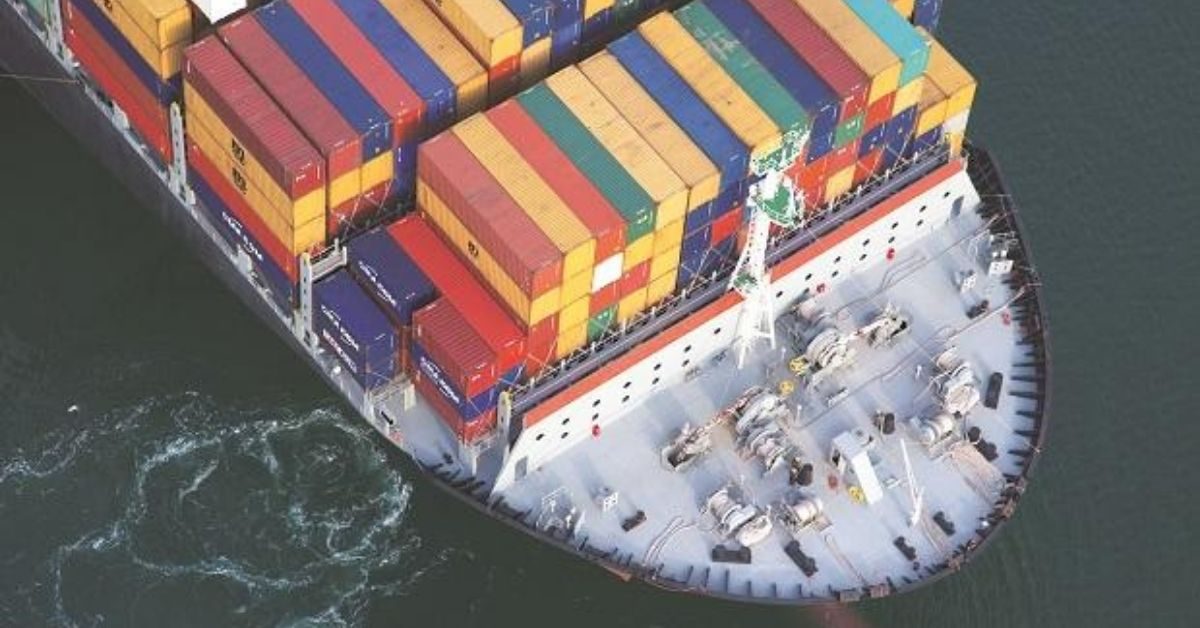Container lines will use a variety of methods to minimise losses due to the oversupply of vessels in 2024, according to Philip Damas, managing director of Drewry Shipping Consultants and head of Drewry’s Supply Chain Advisors practice.
“There will definitely be oversupply,” he highlighted on the latest episode of The Freight Buyers’ Club podcast. “It’s a question of trying to control the level of oversupply. So definitely there will be more blank sailings. We think there will be industrial use of cancelled sailings which will significantly reduce the predictability of container ship departures.
“We also think there will be further reductions in the speed of ships. [Container lines] may also scrap the slowest, oldest ships. So that will result in longer transit times for shippers, which is also a negative. And then there may be, significant suspensions or cancellations of entire services or loops.”
Damas predicted that box lines would collectively record profits of around US$20 billion this year, but the oversupply of vessels would result in a collective loss of US$15 billion in 2024.
How individual lines manage supply will largely depend on whether management’s priority is protecting market share or the bottom line.
“If they want to sacrifice some cargo volumes, and sacrifice some market share to protect the bottom line, they’ll do this. If they don’t want to do that, then we will continue the system where there will be structurally significant oversupply for quite some time,” noted Philip Damas.
He predicted that the next year would be an ocean freight buyer’s market, and shippers would be able to secure significant rate cuts next year, but not as large as the reductions most negotiated in 2023. “But,” he warned, “there will be a price to pay which is that the service reliability and service level of carriers will probably worsen.”
According to Damas, shippers looking to renegotiate ocean freight contracts in the current low freight environment should not only be securing freight rate reductions but also searching for additional efficiencies and savings from carriers “beyond the freight rate rates”.
This includes examining all surcharges, reducing detention and demurrage costs, and not including too much ‘free time’ in contracts.
“This name free time is misleading,” he pointed out. “Free time is not free. You pay for it through your base rates. You also have to have the right contract terms, so if you go over your free time, you are not penalised unfairly.”
In 2024, shippers will also need to contend with new EU Emission Trading System (ETS) surcharges from carriers. Damas said beneficial cargo owners (BCO) at present had very little transparency as to how ETS would be fairly passed on by container lines.
“There’s no clarity about whether they are negotiable,” he added. “It appears that some carriers are not willing to negotiate their unilateral surcharges. It’s not clear at all how they are calculated. It’s not clear how frequently they will be adjusted.
“I think it’s too early to say where this will end. For example, one of our customers has refused to pay in January and pushed this to February.”
He said while current ETS surcharges on most trades were not high, Drewry was concerned not so much about costs in 2024, but whether surcharges are “set at a justified, reasonable level”, not least because ETS surcharges were likely to more than double in 2025 and 2026.
“It’s important to get more clarity and more evidence about the level of charges,” he added. “Some of the shippers point blank refuse to discuss the ETS surcharges [with container lines] and they’re saying, ‘If there’s a surcharge, put it on the base rate’. That’s one approach.
“And then the other approach which we recommend is to try and document and scale a justified level of specified surcharges which you ask carriers to put into your tender sheet, so that you have clarity on what’s the surcharge, and you can track it and negotiate it in the future.”






